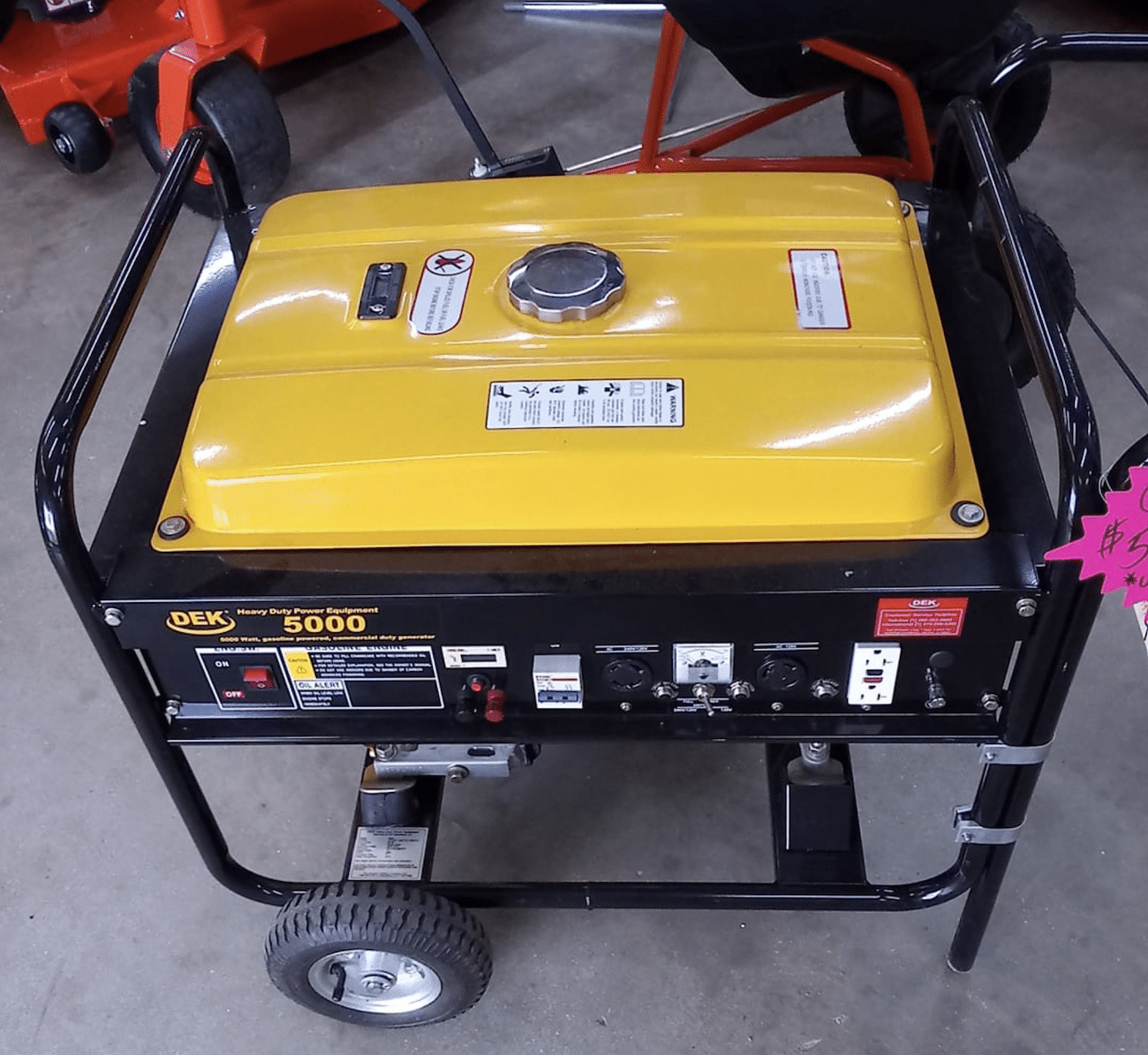In times of power outages, having a generator at home can be a lifesaver. However, choosing the right generator size is crucial to ensure it meets your needs during emergencies. Let’s explore the process of selecting the appropriate generator size for your home.
Understanding Generators and Their Importance
Generators are devices that convert mechanical energy into electrical power, providing electricity when the main power source is unavailable. In emergencies like natural disasters or power cuts, generators keep critical appliances running, ensuring safety and comfort.
 Types of Generators
Types of Generators
Before diving into sizing, let’s understand the types of generators:
- Portable Generators: Ideal for temporary power needs and smaller homes. They are versatile but have limited capacity.
- Standby Generators: Permanently installed and automatically start during a power outage. Suitable for larger homes or those with higher power needs.
Step 1: Assessing Your Power Needs
The first step in choosing a generator is to determine your power requirements. This involves listing the appliances and devices you need to run during an outage and calculating their total wattage.
Essential Appliances and Their Average Wattage
- Refrigerator: 600-800 watts
- Furnace fan: 600-800 watts
- Sump pump: 750-1500 watts
- Lights: 60-600 watts (depending on the number and type)
- Television: 100-350 watts
- Laptop: 50-100 watts
Calculating Total Wattage
Add up the wattage of all essential appliances. Remember, appliances with motors (like a fridge or sump pump) have a higher starting wattage than their running wattage.
Step 2: Understanding Generator Capacity
Generators sizes are rated in watts (W) or kilowatts (kW). One kW equals 1,000 watts. The capacity of a generator indicates the maximum power it can provide.
Step 3: Choosing the Right Generator Size
Based on your calculated total wattage, choose a generator with a capacity that exceeds your total wattage. It’s advisable to add a 20-25% buffer to the total wattage to account for future needs or appliances you may have missed.
Example Calculation
If your total essential wattage is 3,000 watts, with a 25% buffer, you would need a generator capable of providing at least 3,750 watts.
Portable vs. Standby Generators
- Portable Generators: Suitable for powering a few essentials. If your calculated wattage is below 5,000 watts, a portable generator might be sufficient.
- Standby Generators: Needed for whole-house power. If your wattage exceeds 5,000 watts, or if you want to power heavy-duty appliances like central air conditioning, consider a standby generator.
Additional Considerations
- Fuel Type: Generators run on various fuels (gasoline, diesel, propane, natural gas). Consider availability and storage when choosing.
- Noise Level: Especially important in residential areas. Standby generators are generally quieter than portable ones.
- Transfer Switch: For a standby generator, a transfer switch is essential for safety and convenience.
- Location and Installation: Ensure you have a suitable location for the generator. Standby generators require professional installation.
- Maintenance: Regular maintenance is crucial for generator longevity and reliability.
Safety Precautions
- Carbon Monoxide Poisoning: Never use a generator indoors or in enclosed spaces. Ensure proper ventilation.
- Electrical Hazards: Follow all manufacturer’s instructions. Consider hiring a professional for installation and wiring.
- Fuel Storage: Store fuel safely and away from living areas.
The Cost Factor
Cost is a significant factor in choosing a generator. Portable generators are more affordable but offer limited power. Standby generators are more expensive but provide more power and convenience. Consider the initial purchase cost, installation, and ongoing maintenance and fuel expenses.
Generator Size, Brands and Warranties
Research brands and read reviews. Look for warranties and customer service availability. Popular brands include Generac, Honda, and Briggs & Stratton.
The Role of Renewable Energy
Consider solar-powered generators as an eco-friendly option. They are quieter and have no fuel costs but may provide less power than gas-powered generators.
Making the Right Choice
Your choice should be based on:
- Your Power Needs: The total wattage of essential appliances.
- Type of Generator: Portable for smaller needs, standby for whole-house coverage.
- Budget: Balance your power needs with what you can afford.
- Safety and Maintenance: Understand the safety requirements and maintenance needs.
Choosing the right generator size for your home is about balancing your power needs with safety, cost, and convenience. By accurately assessing your needs and understanding the types of generators available, you can make an informed decision that ensures your home stays powered during emergencies.
Come in to Chenango Supply in Punta Gorda today. We are Southwest Florida‘s largest Mahindra and ROXOR dealer. Are you familiar with the ultimate UTV?
Remember, while a generator can be a vital part of your emergency preparedness plan, it’s important to use it safely and maintain it properly. Regular testing and professional servicing can help ensure your generator is ready when you need it most.






